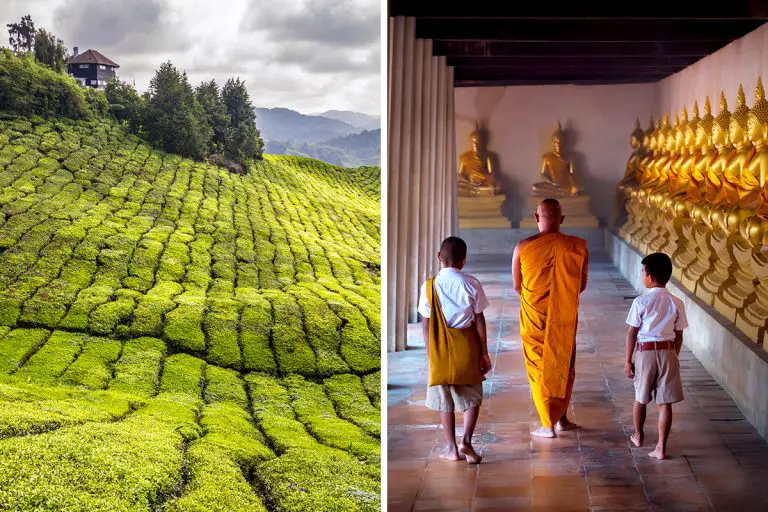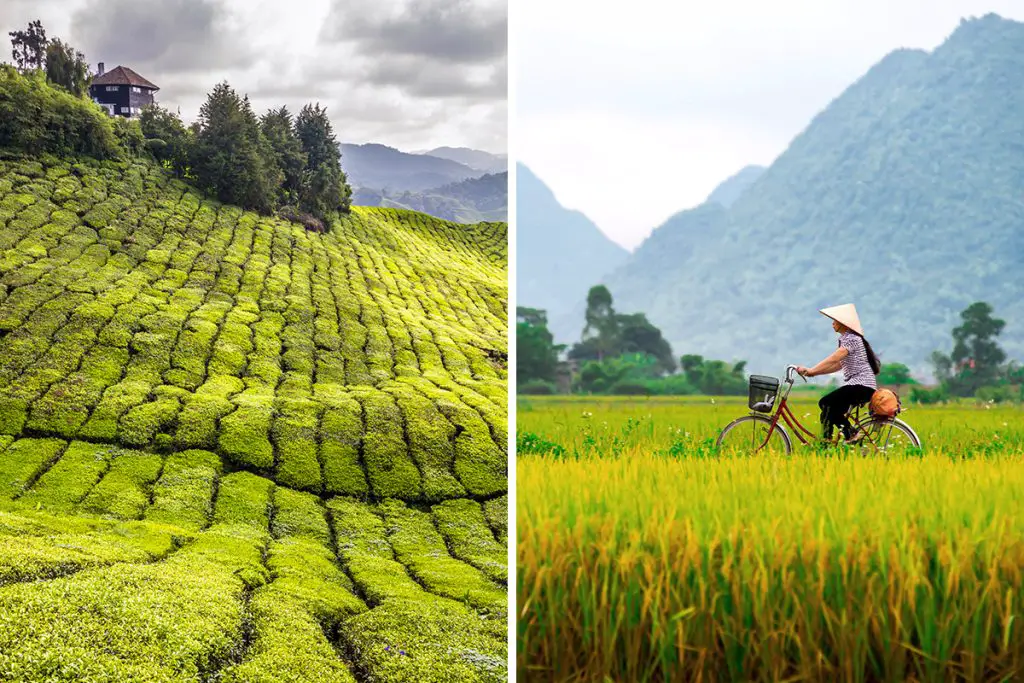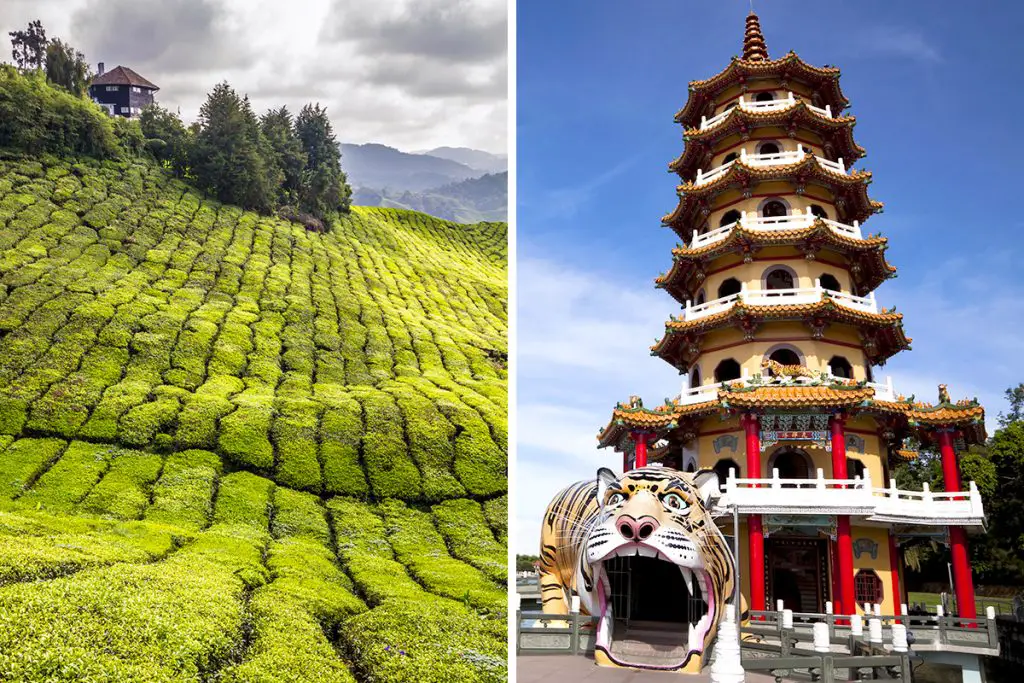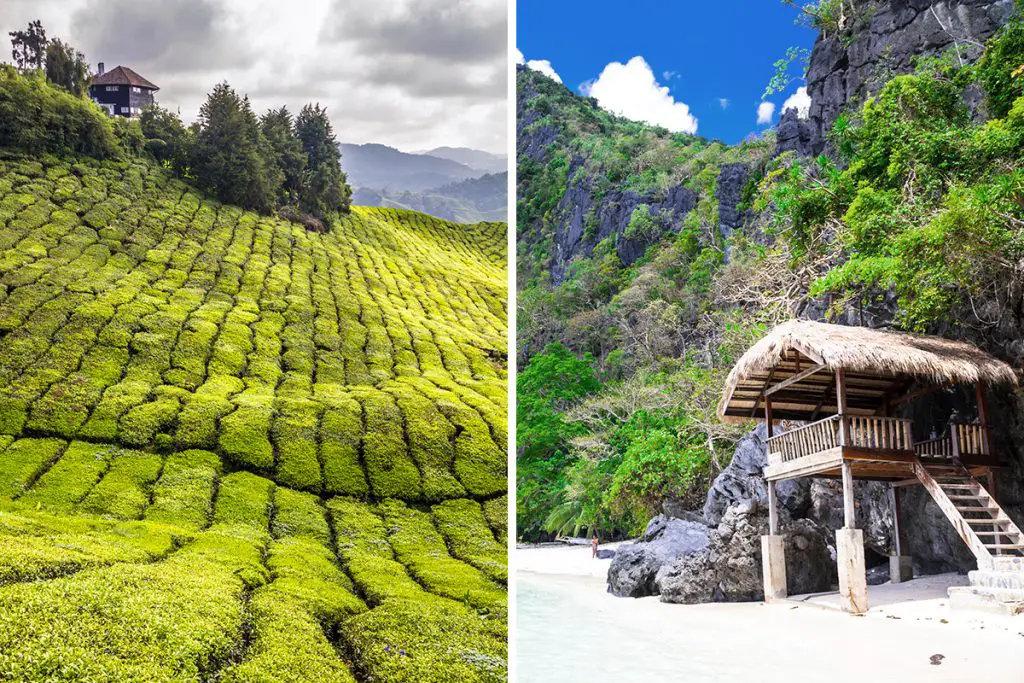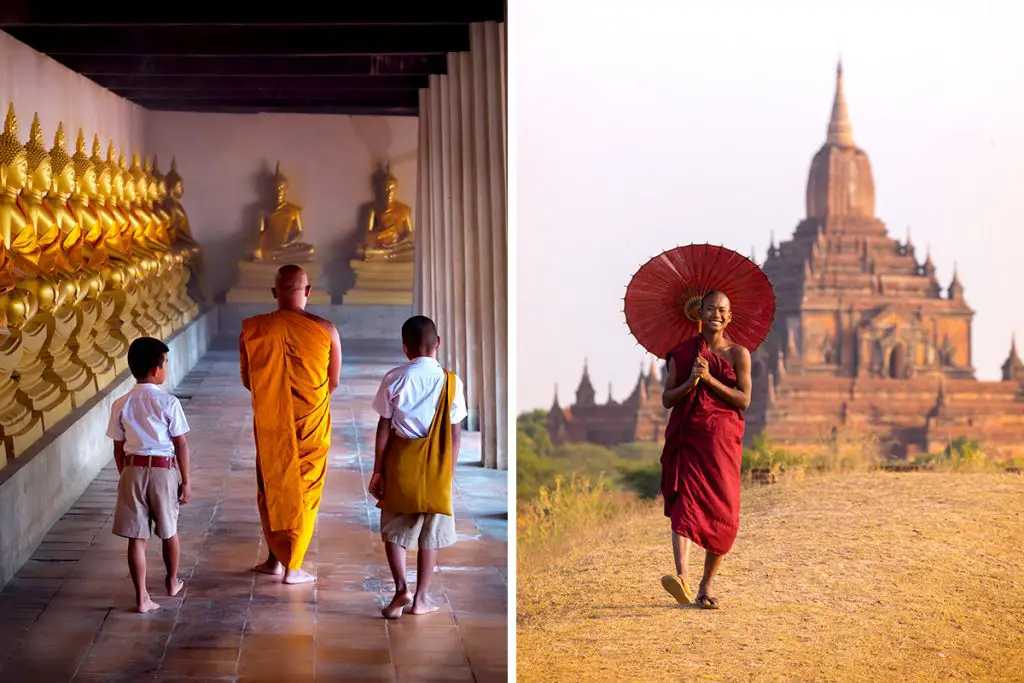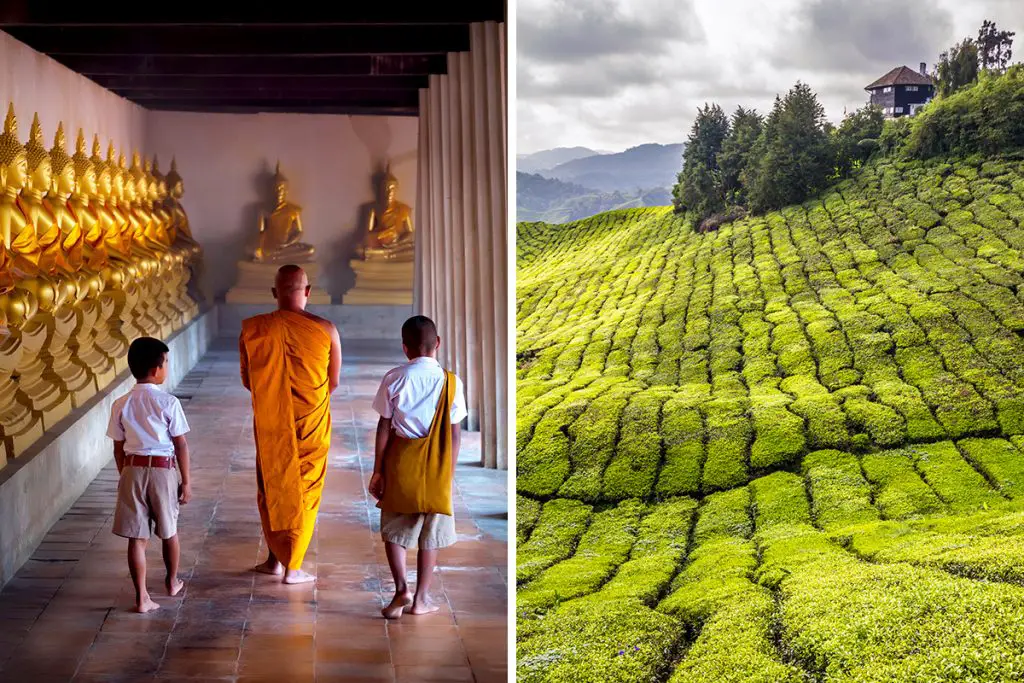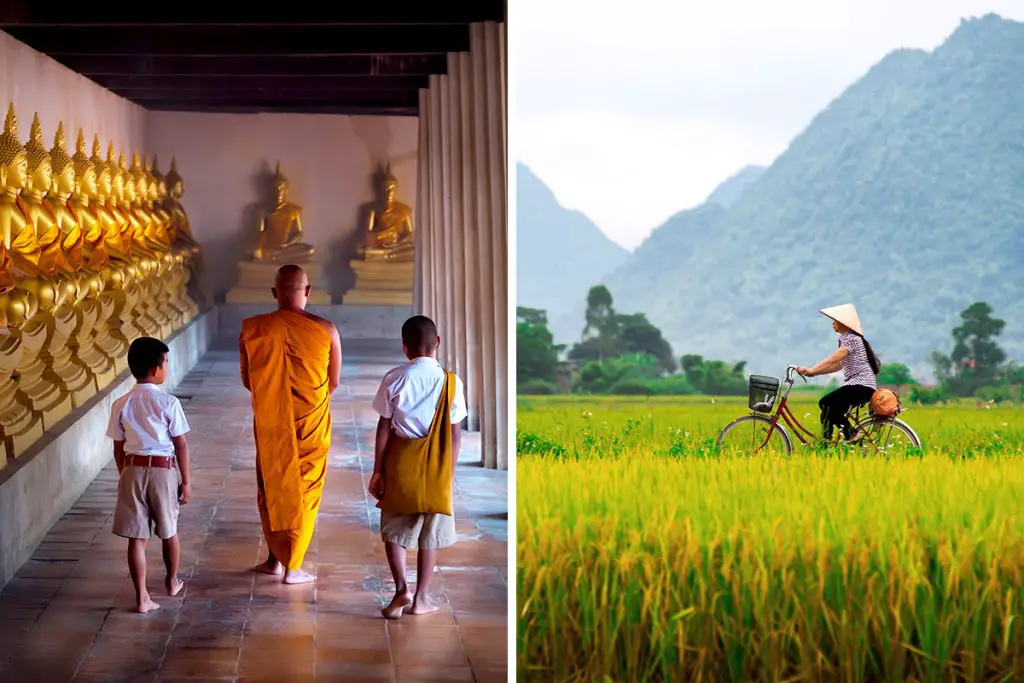Decisions, decisions! Both Malaysia and Laos have layers of history and unique cultural tapestries that make them special in their own right. From ancient temples to modern cities, there’s no shortage of fascinating places to explore. So, sit tight, keep scrolling, and let’s dive into what makes each destination so interesting!
History & Culture
Before you pack your bags, understanding the history and culture of Malaysia and Laos can offer you a deeper connection to these lands. Though they share some similarities, their differences are what makes them each so fascinating.
Malaysia is a melting pot of cultures—primarily Malay, Chinese, and Indian—and has a rich colonial history. A British colony for many years, it has absorbed various influences into its culture, creating a truly multicultural society. The architecture, traditions, and even daily interactions are a blend of the old and new, offering a cosmopolitan experience that celebrates diversity.
Laos, on the other hand, provides a contrast with its more homogeneous culture. Rooted in Buddhism, the country has a simpler, laid-back lifestyle. While it was once part of the French Indochina, Laos retains a stronger sense of its ancient traditions. You’ll find many temples and old villages that have remained largely unchanged for centuries.
When it comes to history, Malaysia’s past is a complex web of sultanates, colonial rule, and eventual independence. The nation has rapidly developed since then, becoming one of Southeast Asia’s economic powerhouses. But its history is still very much alive in its architecture, festivals, and daily life.
Laos has a different story, one marked by kingdoms, French colonial rule, and a quieter path to modernization. The nation has remained largely agricultural and is one of the few communist states remaining in the world. Yet, despite its slower pace, Laos is rich in history and traditions that can make you feel like you’ve stepped back in time.
In summary, Malaysia offers a bustling, multicultural tapestry with strong colonial influences, while Laos provides a more tranquil, unified experience rooted in ancient traditions. Both countries have a lot to offer, but your preference for a more cosmopolitan or simpler lifestyle could be the deciding factor in your choice.
Attractions & Activities
Thinking of where to unleash your inner explorer? Malaysia and Laos are both brimming with attractions and activities that offer much more than just eye candy. Let’s get into the nitty-gritty of what each country has in store for you, to help make your decision a bit easier.
In Malaysia, one place you can’t miss is the Petronas Twin Towers in Kuala Lumpur. Standing at a towering height, it’s a must-see modern marvel. Take the elevator up and marvel at the city below you from the sky bridge.
If nature is more your thing, you’ll find solace in the Cameron Highlands. Known for its tea plantations, you can take guided treks and explore the verdant landscapes.
Laos, on the opposite spectrum, offers attractions steeped in tranquility and natural beauty. One example is the Kuang Si Falls near Luang Prabang. This multi-tier waterfall creates a series of turquoise-blue pools that are a sight to behold.
For a slice of history, you can explore the Plain of Jars in Xieng Khouang Province, a mysterious site filled with thousands of stone jars of unknown origin.
Are you a fan of wildlife? Malaysia’s Borneo Island is home to Orangutans, and various nature reserves offer guided treks to see these magnificent creatures. It’s a completely different world from the hustle and bustle of Kuala Lumpur. On the other hand, in Laos, you can take a slow boat ride down the Mekong River, observing the pastoral life and scenic beauty along the banks.
Summing it up, Malaysia offers a mix of modern and natural attractions, from towering skyscrapers to lush highlands. Laos leans more towards the natural and historical, offering breathtaking waterfalls and ancient, mysterious sites. The activities in each country reflect their unique atmospheres: Malaysia’s are more cosmopolitan and diverse, while Laos offers activities that let you unwind and soak in the surroundings.
Beaches
Ready to feel the sand between your toes? Both Malaysia and Laos boast some beautiful beaches, though in quite different settings. Let’s break down what each of these fantastic destinations offers in terms of beachside bliss.
Malaysia’s coastline stretches approximately 4,675 miles (7,517 kilometers), offering a wide range of beach experiences. One notable mention is Langkawi, an island with beaches featuring soft, golden sand framed by crystal-clear waters. The island also offers water sports like snorkeling and kayaking if you’re in for some adventure.
Laos is landlocked, but that doesn’t mean it lacks water-based activities. The Si Phan Don, or 4,000 Islands, in the Mekong River offer a very different kind of beach experience. Here, the beaches are more rugged and natural. While you can’t surf, you can definitely go fishing or simply relax and watch the river flow by.
In Malaysia, Penang’s Batu Ferringhi Beach is a popular spot. Although it’s not a place for extreme water sports, it’s excellent for a relaxed day by the sea, featuring a view of fishing boats against the horizon. The beach stretches for about 1.9 miles (around 3 kilometers), giving you plenty of space to roam.
Contrastingly, the Laotian beaches along the Mekong River give you more intimate settings, where the natural world envelops you. Although you won’t find long stretches of sand, the peace and serenity make up for it. Plus, the sunsets are nothing short of magical.
In summary, Malaysia’s beaches offer golden sands and a wide range of activities along extensive coastlines. Laos, while not having sea beaches, does offer unique river beaches that are more laid-back and tranquil. Your choice will ultimately hinge on what kind of beach experience you’re looking to have: expansive and activity-filled or intimate and peaceful.
Eating, Drinking & Nightlife
When it comes to eating, drinking, and enjoying the nightlife, both Malaysia and Laos have unique flavors to offer. Whether you’re into fine dining or street food, or sipping cocktails or local brews, both countries have their own unique twists. Let’s dig into what each has to offer.
In Malaysia, the food is a blend of Malay, Chinese, and Indian influences. Street food is king here. Take a walk in any city and you’ll stumble upon food stalls selling satay, nasi lemak, and roti canai. It’s a foodie’s paradise with a range of flavors that tantalize the taste buds.
Fine dining is also an option, especially in cities like Kuala Lumpur where you can find world-class restaurants serving a variety of international cuisines.
Laos offers a simpler but no less delicious culinary experience. Laotian food is less spicy than many of its neighbors but offers unique dishes like laap (minced meat salad) and sticky rice. Freshwater fish and herbs are staple ingredients, offering a different but equally tasty palate of flavors.
When it comes to drinking, Malaysia offers a range of options. From the bustling bars of Kuala Lumpur offering international brands to the ‘teh tarik,’ a local tea beverage, there’s something for everyone. But note that Malaysia has a predominantly Muslim population, which affects the availability of alcohol in certain areas.
In Laos, ‘Beerlao’ is the drink of choice for many. This locally brewed beer is a staple in social gatherings and offers a way to cool down in the tropical heat. Rice whiskey, another local favorite, is worth trying if you’re adventurous.
Wrapping it up, Malaysia offers a multicultural array of eating options and a variety of drinks but with some limitations on alcohol. Laos provides a more straightforward but equally satisfying culinary experience with local brews that are easy to find. Nightlife in Malaysia is more varied and vibrant, especially in the bigger cities, while Laos offers a more laid-back atmosphere to enjoy your evenings.
Shopping
Keen to bring home some souvenirs or indulge in retail therapy? Malaysia and Laos have distinctive shopping experiences waiting for you. Let’s see how they stack up against each other.
Malaysia is a shopper’s dream, especially in Kuala Lumpur. The city is dotted with huge shopping malls like the Suria KLCC and Pavilion, where you can find high-end brands and luxury items. For something local, the Central Market offers handicrafts, clothes, and souvenirs. Plus, you can’t leave Malaysia without picking up some local spices or teas.
Laos, in contrast, is more about open-air markets and local crafts. The Night Market in Luang Prabang, for example, is an experience in itself. You’ll find handmade textiles, local artworks, and simple but meaningful trinkets. It’s a more traditional and modest shopping experience compared to the malls of Malaysia.
If you’re looking for electronics, Malaysia is the place to go. The Low Yat Plaza in Kuala Lumpur is the go-to spot for all things tech. Laos has fewer options in this regard but does offer simpler gadgets in its general markets.
In terms of pricing, Malaysia is generally more expensive, especially for branded and luxury items. However, it offers a wider variety. Laos is more budget-friendly but has a more limited range in terms of international brands.
To sum it up, Malaysia offers a contemporary shopping experience with a blend of luxury and local items. Laos is your go-to for authentic crafts and traditional markets. Both offer unique shopping experiences, but your choice may depend on what you’re looking to bring home with you.
Accommodation
When it comes to laying your head down after a long day of exploring, both Malaysia and Laos have unique offerings. From luxurious resorts to charming guesthouses, each destination provides a special backdrop for your stay. Let’s explore what sets them apart.
In Malaysia, accommodation choices are diverse. The larger cities, especially Kuala Lumpur, are brimming with five-star hotels that offer top-notch amenities like infinity pools and rooftop bars. Smaller towns like Penang and Malacca offer charming boutique hotels, many set in beautifully restored colonial buildings.
For nature enthusiasts, resorts in the Cameron Highlands or Langkawi offer a more rustic experience, often with stunning views.
On the other hand, Laos primarily features smaller, family-run guesthouses and boutique hotels. These establishments are usually filled with local character, offering an intimate experience. Luang Prabang, for instance, boasts traditional wooden houses transformed into cozy stays. Even the capital, Vientiane, lacks large hotel chains, providing a more authentic experience.
If you’re looking for something in touch with nature, Laos also has eco-resorts. These places are often located near national parks, like the one in Luang Namtha, providing a raw, close-to-nature setting.
In summary, Malaysia offers a wide range of accommodations, from swanky city hotels to relaxing beach resorts. Laos, by contrast, offers an intimate, often rustic experience with smaller accommodations that are rich in local charm.
Family-Friendliness & Children’s Activities
When you’re traveling with the whole clan, it’s essential to know what kind of family-friendly options are available. Malaysia and Laos each offer something unique for families, and both could be the perfect playground for your young adventurers.
In Malaysia, theme parks are the star of the show for families. Places like Legoland Malaysia in Johor Bahru or Sunway Lagoon near Kuala Lumpur are full-day adventures with rides and attractions for all ages. The country also offers a variety of nature-based activities like jungle trekking and bird-watching, which are great for older children and teens.
Laos, while not having big theme parks, offers a unique sort of playground. Think of taking your kids on a boat ride down the Mekong River or exploring the mysterious Plain of Jars. Activities like these can be both fun and educational, offering your family a glimpse into a different culture and environment.
In both countries, you’ll find plenty of parks and open spaces where children can run around. Malaysia’s KLCC Park and Laos’s Buddha Park offer expansive spaces for kids to burn off some energy while you soak in the scenery.
Both countries also offer cooking classes geared towards families, so you can learn to prepare local dishes together. It’s not just about eating; it’s about spending quality time together and creating memories.
In conclusion, Malaysia offers a more modern range of family activities with its theme parks and urban attractions. Laos provides a more natural and cultural experience that can be equally captivating for children and adults alike.
Getting There & Getting Around
So, you’ve decided on a destination, but what about the journey and moving around once you arrive? From airports to local transport, let’s see how Malaysia and Laos compare.
Getting to Malaysia is often easier and more convenient for international travelers. The Kuala Lumpur International Airport (KLIA) serves as a major hub for flights from around the world. It’s located about 45 miles (about 72.4 km) from the city center.
On the other hand, Laos’s main international gateway is the Wattay International Airport in Vientiane, which is about 2 miles (about 3.2 km) from the city center. While KLIA offers more frequent international connections, Wattay has fewer options but is closer to the action.
Now, let’s talk about getting around. In Malaysia, public transport is well-developed, especially in larger cities like Kuala Lumpur. The metro, buses, and even bike-share systems make moving around a breeze. For longer distances, the country has an extensive train network and well-maintained roads if you prefer to drive.
In Laos, your options are a bit more limited. Local buses and tuk-tuks are the primary ways to move around, and while they lack the polish of Malaysia’s public transport, they offer a more authentic experience. For long-distance travel, buses and riverboats are the way to go, unless you choose to fly between major cities.
In summary, Malaysia offers easier international access and a more developed public transport network. Laos provides a closer, more intimate arrival experience and allows for a more traditional way of getting around. Both offer their own unique charms, and your choice might come down to what kind of travel experience you’re after.
Weather
When it comes to vacation planning, weather often takes center stage. Whether you’re a fan of warm, sunny days or prefer the cooler, misty atmosphere, both Malaysia and Laos have something to offer. Let’s dive into the climate differences between these two fascinating destinations.
Malaysia has a tropical climate, meaning it’s generally hot and humid all year. You’ll find temperatures ranging between 77°F and 95°F (25°C to 35°C). However, the country experiences its wet season from November to March on the west coast and from May to September on the east coast. So if you’re targeting sunshine, plan your visit accordingly.
Laos also has a tropical climate but tends to be less humid than Malaysia. The hot season falls between March and May, with temperatures rising up to 104°F (40°C). The rainy season in Laos usually runs from May to October, bringing lush landscapes and cooler temperatures ranging from 68°F to 86°F (20°C to 30°C).
If you’re keen on outdoor activities, the dry season in both countries is your best bet. For Malaysia, it would be from May to September on the west coast and from November to March on the east coast. In Laos, aim for November to March when the weather is most stable.
In summary, Malaysia offers a humid, tropical experience year-round, with regional variations in rainfall. Laos presents a less humid alternative, with distinct hot, wet, and dry seasons. Your choice might hinge on your preferred weather type and activities.
Safety
Safety is a crucial aspect to consider when picking a travel destination. Both Malaysia and Laos are generally considered safe for travelers, but there are some differences worth noting.
In Malaysia, petty crime like pickpocketing can be an issue in crowded places, but violent crime is relatively rare. Public transport and tourist areas are generally well-patrolled.
Laos is also generally safe when it comes to violent crimes. However, unexploded ordnance from past conflicts still exists in some rural areas, so it’s advisable to stick to well-trodden paths if you’re hiking or exploring.
In terms of health, both countries require some vaccinations and malaria prevention, especially if you’re traveling to rural areas. However, Malaysia has more modern healthcare facilities compared to Laos, which might offer peace of mind for some travelers.
In summary, both Malaysia and Laos are generally safe destinations, each with their own set of concerns. Malaysia has better healthcare facilities, while in Laos, it’s important to be mindful of unexploded ordnance in certain areas.
Cost
Your budget will inevitably play a significant role in your travel plans. So how do Malaysia and Laos stack up in terms of costs? Let’s break down some of the key expenses you can expect in each destination.
In Malaysia, a meal at a mid-range restaurant might cost you around 40 Malaysian Ringgit (approximately 8.50 US dollars). Public transportation is also affordable, with a one-way ticket usually costing 3 Ringgit (approximately 0.50 US dollars). Accommodation varies but expect to spend around 70 US dollars for an average hotel room.
In Laos, you can get a fulfilling meal at a mid-range restaurant for about 10 US dollars. Transportation is relatively cheap as well, with tuk-tuk rides costing around 20,000 Kip (approximately 1.00 US dollar). Mid-range hotel rooms in Laos can go for an average of 50 US dollars.
In both countries, food and transport are affordable, but Malaysia leans on the pricier side when it comes to accommodation. Laos offers more budget-friendly options in this regard.
In conclusion, if you’re budget-conscious, you might find Malaysia a slightly more economical option. Laos, on the other hand, can be at a higher price point overall.
Which Is Better – Malaysia or Laos?
So, you’ve absorbed a heap of information about the incredible destinations of Malaysia and Laos. With all those juicy details in mind, you might be closer to making a choice for your next great adventure. But let’s take a moment to wrap it all up, and identify when each destination shines brightest.
In terms of history and culture, Malaysia offers a more humid, tropical experience with regional variations in rainfall. Laos, on the other hand, provides a less humid alternative with distinct hot, wet, and dry seasons.
If you love exploring different cultures and historical perspectives, both countries have diverse offerings. But if you’re looking for a more modern, metropolitan vibe along with a deep dive into diverse traditions, Malaysia stands out.
As for attractions and activities, Malaysia might appeal to those who prefer a wider range of experiences, from high-end shopping to extensive outdoor activities. Laos keeps things simpler and more natural, which might be a good fit if you’re into eco-tourism and prefer a less commercialized setting.
If you’re interested in gastronomic adventures and nightlife, Malaysia offers a broader range of options, given its more diverse culinary scene and vibrant nightlife. Laos offers a more subdued but still enjoyable experience, making it ideal if you’re looking for a more relaxed atmosphere.
When it comes to accommodations, Malaysia leans on the pricier side but offers more luxurious options. Laos is more budget-friendly, especially if you’re comfortable with basic amenities. In terms of family-friendliness and activities for children, both countries offer a good mix of options, but again, Malaysia has more variety due to its more developed tourism industry.
Ease of travel and local transportation are key logistics to consider. Both countries have well-developed public transport networks in major cities, but Malaysia offers more modern amenities and might be easier to navigate for English speakers. Laos provides a more basic but also less crowded experience, which could be preferable if you’re looking to avoid tourist hotspots.
To sum it all up, if you’re seeking a destination that offers a mix of modern and traditional experiences, diverse activities, and a wide range of gastronomic delights, Malaysia might be more up your alley. But if you’re after a simpler trip with an emphasis on natural beauty and a relaxed atmosphere, Laos is a fantastic choice. The right destination for you will ultimately depend on what you want to get out of your trip.

